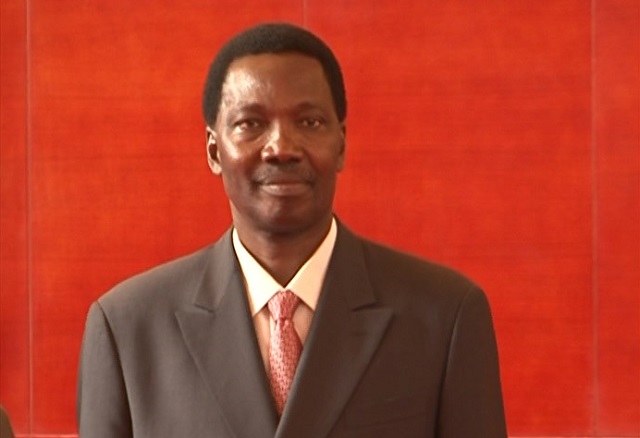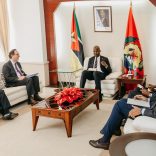Mozambique: Domestic debt service to peak at 20 billion meticais in September
2016 inflation to hit 29-34%, growth at 3.5%, net reserves at ‘critical level’ – Bank of Mozambique

TVM (File photo) / Rogério Zandamela photographed during his inauguration as governor of the Central Bank [Banco de Moçambique] in a ceremony in Maputo on September 1 2016.
The Bank of Mozambique on Thursday revised the economic growth forecast down to 3.5 percent with inflation rising to at least 29 percent in 2016 and warned of a “critical level” of net reserves, sufficient for only three months of imports.
The economic growth forecast, presented at a press conference by the governor of the central bank, Rogerio Zandamela at the end of a meeting of the Monetary Policy Committee, compares with 6.4 percent in the previous year and is below the 4.5 percent previously estimated by the institution and the Government and the 3.7 percent calculated by the International Monetary Fund.
Inflation, according to Zandamela, stood at 25 percent in September, but did not take into account the effect of the fuel price increase, and will have a “growing trend” ranging between 29 percent and 34 percent by the end of the year.
The inflation figures are explained by annual metical depreciation of 77 percent against the dollar, 92.9 percent against the euro and 93.4 percent against the rand, a decline in domestic production and rising prices of goods across southern Africa.
Zandamela warned that net international reserves have continued to deteriorate to coverage for only three months of imports, as a result of “demand for foreign currency to import essential goods and payment of external debt service”, within a scenario of international partners remaining frozen.
“We are at critical levels,” the governor, who replaced Ernesto Gove in the post in September, noted. In 2016, Mozambique’s public debt soared to US$397 million (EUR365 million), 86 percent of gross domestic product’ as a result of the disclosure of substantial loans hidden from public accounts.
The central bank governor also pointed to the widening of the government deficit, with a slight increase in revenues to June overtaken by expenditure increases.
“Latest data show the state’s continuing use of treasury bills, which indicates pressure financing the budget,” Zandamela warned.
The fall in international prices of imported goods and depreciation of the metical exchange rate has led, paradoxically, to an improved balance of payments between Mozambique and the rest of the world.
The trade deficit decreased by 40.9 percent in the first half of 2016 compared to the previous year, as a result of the decline in 27.9 percent of imports and 15.6 percent of exports.
The Bank of Mozambique on Thursday increased the benchmark interest rate by six percentage points to 23.25 percent for loans and 15.5 percent for deposits to correct a “system malfunction” and make them positive in real terms.
“These Bank of Mozambique decisions are intended to align the reference interest rates to current market conditions, making them positive in real terms and withdrawing excess liquidity from the banking system,” Zandamela said.
In his presentation to the press, he said that Mozambique has been adversely affected by the “poor performance” of both the world economy and that of the Southern Africa region, particularly neighbouring South Africa, the main economic power in the region.
Among domestic factors, Zandamela pointed to the slowdown in economic growth coupled with the depreciation of the metical and reduced domestic production, together the tightening of prices in South Africa, as prompting the continued rise in inflation in Mozambique.
Zandamela also pointed out the negative economic impact of natural disasters, the ongoing political and military crisis between the government and the Mozambican National Resistance (Renamo), and the suspension of foreign aid as a result of revelations of hidden debt, together with the volatility of commodity prices affecting the balance of payments.













Leave a Reply
Be the First to Comment!
You must be logged in to post a comment.
You must be logged in to post a comment.